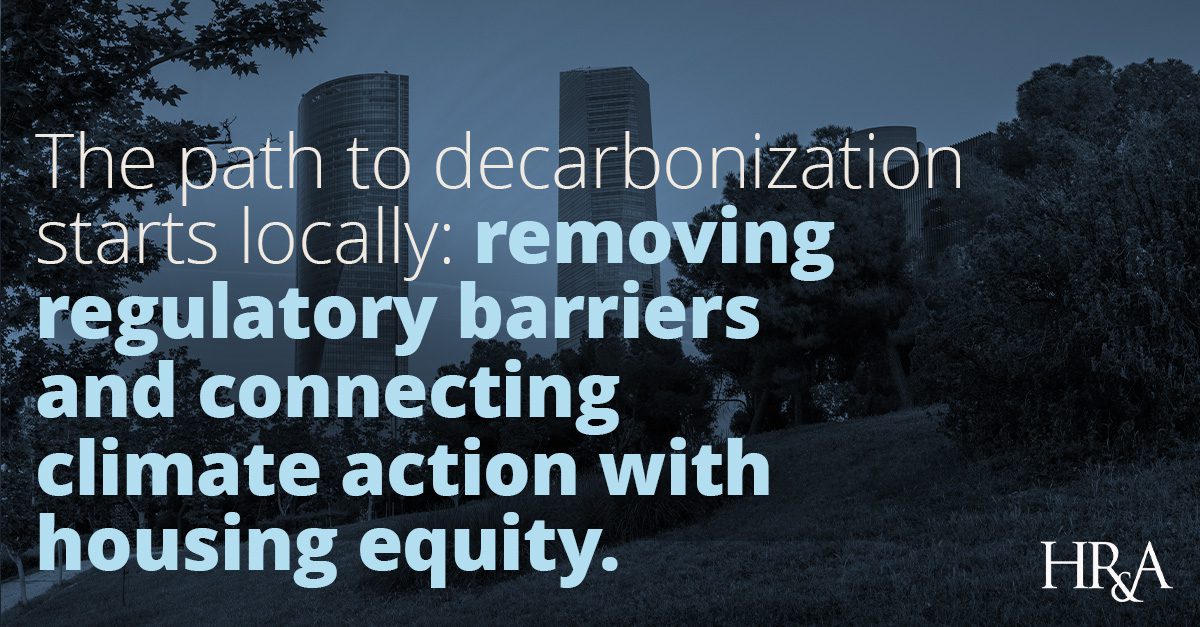on Nov 13, 2025
Homegrown Solutions: Affordable Housing and Decarbonization

Homegrown Solutions: Affordable Housing and Decarbonization
As US cities grapple with the effects of climate change, they’re also facing growing housing affordability challenges. Decarbonizing existing buildings lies at the heart of these dual crises, but in large cities like New York, there are significant barriers we need to address to make decarbonization possible.
The only practical way to decarbonize existing building stock is through significant investments, which are expensive and risk increasing occupancy costs. To add an additional layer of complexity, funding for these investments is limited.
One of our favorite things to do at HR&A is to roll up our sleeves alongside the smartest people working to address issues facing cities and turn our good ideas into workable solutions. We recently hosted a salon-style conversation in our New York Office about this topic and developed a few solutions to move the needle:
- Partner for Regulatory Innovation: Although local and regional resources are limited, we cannot wait for new policy directions from Washington. Removing local regulatory barriers is the most robust, plausible, short-term response. We still need to consider the actual risks that decarbonization technologies present, especially in the context of other risks routinely accepted or “grandfathered” by regulators. Simultaneously, we must lay the foundation for a longer-term strategy at the state and federal levels.
- Frame Investments around Improving Quality of Life: There is a strong need for explicit connections between investments in decarbonization and investments in housing quality. For example, investing in heat pumps improves the quality of life for tenants by increasing their control over heating and cooling while also lowering carbon emissions. This type of investment creates opportunities for pooling funds and batching work for greater impact. The pitch to policy makers, funders, and residents is focused on comfort, health, and equity, not climate mitigation.
- Focus on Technology: There are opportunities to focus on technology as a way to speed deployment, reduce construction costs, and expand impact. For example, there are products coming to market that enable faster installations and minimize costs since they don’t require specialized equipment or labor. Technology shifts will continue making products better (in terms of greater efficiency and lower cost) and are also creating new opportunities to make this industry more accessible to a wider range of workers.
While funding challenges remain a significant barrier, there are additional tools in a city’s toolkit that can help streamline the process for decarbonization efforts and make the solutions more financially feasible for building owners. We look forward to continuing the conversation and exploring other ways we can move the climate needle in New York and beyond.
If you’re interested in exploring this topic further, we encourage you to read a new report — Decarbonizing NYC Co-ops: A Local Law 97 Compliance Roadmap — the result of a ULI Technical Assistance Panel chaired by HR&A Partner Jonathan Meyers and other industry leaders. The report was recently featured in Crain’s New York Business and Smart Cities Dive.